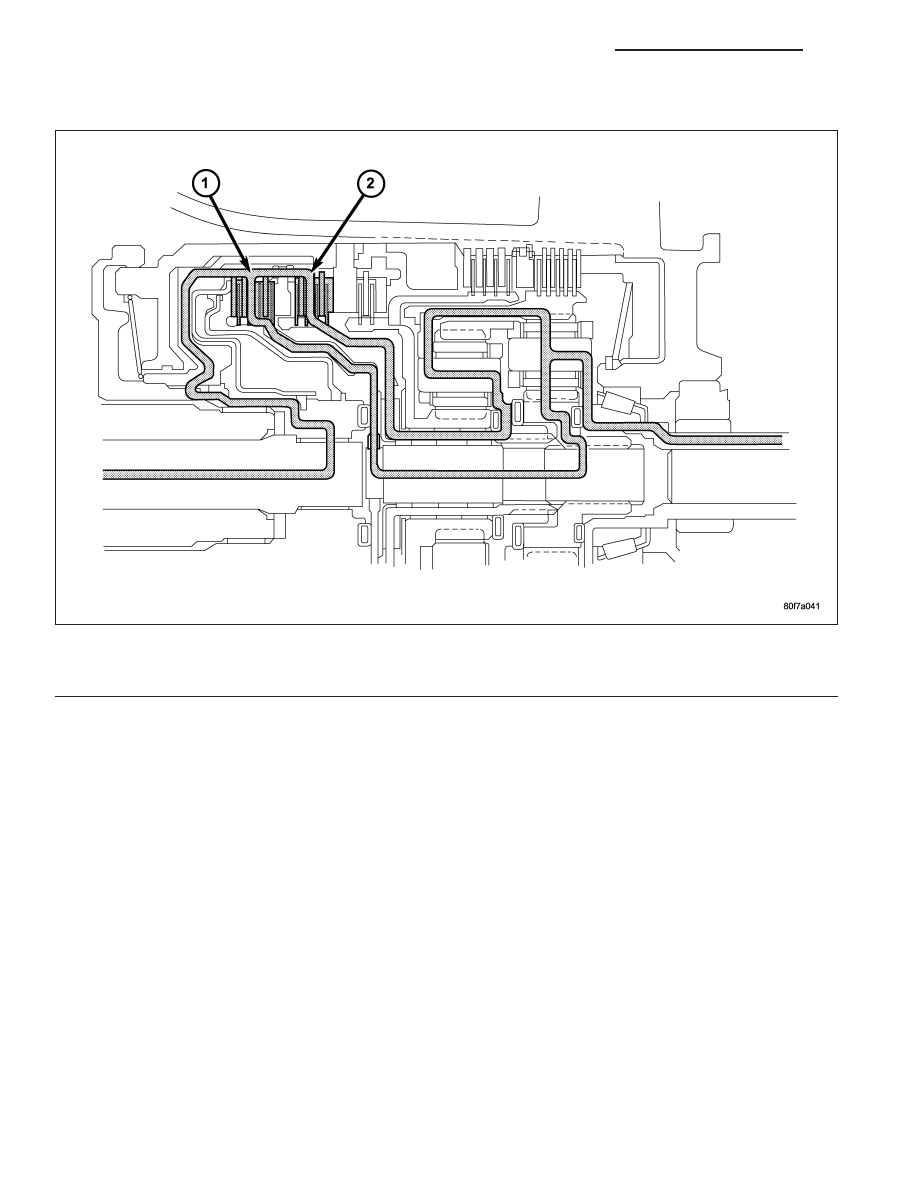Dodge Dakota (ND). Manual - part 964

THIRD GEAR POWERFLOW
In third gear, two input clutches are applied to provide torque input: the underdrive clutch (1) and overdrive clutch
(2). The underdrive clutch rotates the rear sun gear, while the overdrive clutch rotates the front carrier/rear annulus
assembly. The result is two components (rear sun gear and rear annulus gear) rotating at the same speed and in
the same direction. This effectively locks the entire planetary gearset together and is rotated as one unit. The gear
ratio in third is 1:1.
Third Gear Powerflow
1 - UNDERDRIVE CLUTCH APPLIED (Turns Rear Sun)
2 - OVERDRIVE CLUTCH APPLIED (Turns Front Carrier/Rear Annulus)
21 - 248
AUTOMATIC TRANSMISSION 42RLE - SERVICE INFORMATION
ND